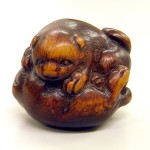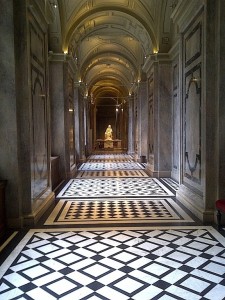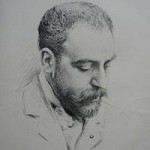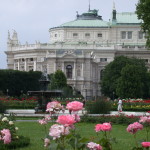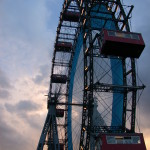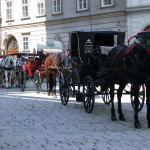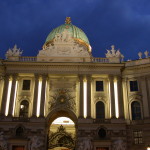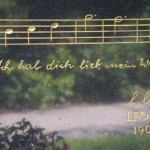A Valentine’s Day Attempt
It’s madness, says reason, It is what it is, says Love
(Es ist Unsinn, sagt die Vernunft, Es ist was es ist, sagt die Liebe) – Erich Fried, Was es ist

 A drastic decrease in heart-shaped Milka boxes at Merkur combined with a sharp increase in the amount of debonair gentlemen bearing bouquets of fresh flowers throughout Vienna’s streets on the 14th of February can only mean one thing. After years of stead-fast resistance, the Austrians have finally caved in to cupid.
A drastic decrease in heart-shaped Milka boxes at Merkur combined with a sharp increase in the amount of debonair gentlemen bearing bouquets of fresh flowers throughout Vienna’s streets on the 14th of February can only mean one thing. After years of stead-fast resistance, the Austrians have finally caved in to cupid.
Ahh yes, opened up their hearts to let the sunshine in.
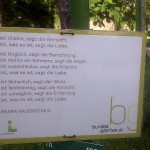
“It is what it is” poem from Erich Fried dedicated to a loved one on a rose bush in Vienna’s Volksgarten
And nothings says Ich liebe dich, like reciting a few of Vienna-born, Erich Fried’s poems over the candlelight dinner for two. Not a German native speaker? No worries, you can apparently get them in English (more info at the end of post).
But I know you. You’re a risk taker. And nothing says manly man like reading a love poem to your Herzilein in the original language. As my Australian friend would say – Well, good on ya! But you are still a bit worried about the accent? Don’t. Short, simple with a goo-goo eye (and hopefully ear) guarantee. She’ll be so smitten, she won’t notice your over-pronounced r’s and mix up of the i and the e. And if all else fails, remember, the more she drinks, the better you’ll sound.
But  which poem, you ask. No worries. With Fried, you just can’t go wrong.
which poem, you ask. No worries. With Fried, you just can’t go wrong.
Just don’t forget Es ist, was es ist (It is what it is).
And as a Valentine’s present from KC to you, beloved reader, I have translated one of the poems from his book entitled, Es ist, was es ist to help you get started:
| An Attempt I tried to try while I had to work to think of my work and not of you and I am happy that the attempt did not succeed Translation: KC Blau |
Ein Versuch Ich habe versucht zu versuchen während ich arbeiten muß an meine Arbeit zu denken und nicht an dich Und ich bin glücklich daß der Versuch nicht geglückt ist |
Who was Erich Fried?
Sadly, Erich Fried’s Vienna years ended quite suddenly and tragically. Born on May 6, 1921, Fried lived at Alserstrasse 11 in the 9th district of Vienna as a child. When he was 16 and a student at a Gymnasium in the Wasagasse, German troops occupied Austria and arrested his parents for transferring money abroad. The Nazis closed his school and separated the Jewish children. Shortly after Erich Fried’s 17th birthday, his father was released from prison but died the next day from the injuries the Gestapo inflicted on him during captivity. Two months later, in July, Fried’s family was evicted from their apartment and in August, they fled to England where they lived in exile and Erich Fried eventually adopted British citizenship.

Romantic that you are, you don’t give just give your lady a bouquet, you give her her very own rose bush: Here’s how to dedicate a rose bush to her in Vienna’s Volksgarten, you sly devil you.
More Info about Erich Fried
Publisher’s website: http://www.erich-fried.de/start.htm
Wikipedia: http://en.wikipedia.org/wiki/Erich_Fried
Delve into one of his books:
Fried, Erich. Es ist was es ist: http://www.amazon.de/ist-was-Liebesgedichte-Angstgedichte-Zorngedichte/dp/3803131189/ref=pd_bxgy_b_img_y
Fried, Erich. Liebesgedichte – http://www.amazon.de/Liebesgedichte-Erich-Fried/dp/3803131138
I haven’t read this book so I can’t vouch for Stuart Hood’s English translation – whatever you do, don’t judge the book by its cheesy cover: http://www.amazon.de/Love-Poems-Classics-Erich-Fried/dp/1847492959


